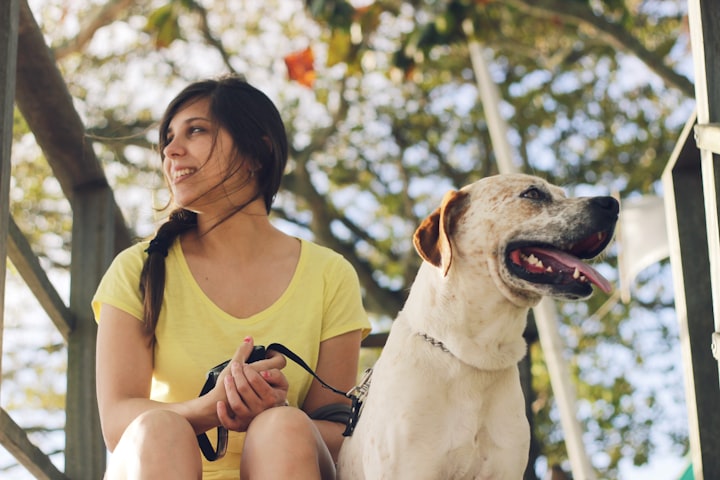Pawsitive Reinforcement: Innovative Dog Training Methods
Building Trust and Strengthening Bonds through Positive Reinforcement Techniques for Your Canine Companion
One of my close friends, Sarah, had a puppy named Boo who was very energetic and often misbehaved. Sarah had tried various training methods but none seemed to work, and she was frustrated with the lack of progress. That's when she decided to try pawsitive reinforcement by applying what she read in a book about this subject. Through her experience, she gave me this information and advices:
When it comes to teaching your pet, there are several methods available to you. Positive reinforcement, on the other hand, is one of the most common and efficient approaches. This method entails praising your dog for excellent conduct while disregarding undesirable behavior. I will talk you about the advantages of pawsitive reinforcement and how you may use it to train your dog.
What is Pawsitive Reinforcement?
Pawsitive reinforcement is a training method in which you praise your dog for excellent conduct. When it comes to modifying behavior, this strategy is founded on the premise that positive reinforcement is more successful than punishment. You may reward your dog for desirable behavior with food, praise, or toys. This encourages your dog to perform the same thing again in the future.
The Benefits of Pawsitive Reinforcement
There are several advantages to employing pawsitive reinforcement to educate your puppy. Among the most prominent advantages are:
1- That works better than punishment. When it comes to modifying behavior, positive reinforcement has been demonstrated to be more successful than punishment. Punishment can cause dogs to become fearful and anxious, making them less likely to behave appropriately in the future. Positive reinforcement, on the other hand, develops a positive link with excellent behavior, increasing the likelihood that your dog will repeat it in the future.
To find out more, you can read the book that Sarah read
2- It fosters trust and develops your relationship with your dog. When you utilize pawsitive reinforcement, you are teaching your dog to trust you. Your puppy learns that you are a source of positive reinforcement, such as cookies and praise. This can assist to build the link between you and your pet, making your relationship better overall.
3- It's entertaining for your dog. Dogs like pleasing their humans, and pawsitive reinforcement allows them to do exactly that. When your dog exhibits a desired behavior, they are rewarded with goodies and praise, which is a lot of fun for them. This makes training more pleasurable for your dog, which may increase their eagerness to learn.
4- It promotes positive conduct. Positive reinforcement motivates and rewards excellent conduct. When your dog performs a desirable action and receives a reward, the behavior is more likely to be repeated in the future. This makes training your dog easy and encourages good behavior.
5- It can be used to teach any breed of dog. Any dog, regardless of breed, age, or temperament, may be trained through positive reinforcement. It's a flexible strategy that can be tailored to every pup's needs.
How to Use Pawsitive Reinforcement to Train Your Pup
Now that you know the benefits of pawsitive reinforcement, you may be wondering how to use this technique to train your pup. Here are some tips to help you get started:
1- The first step in employing this strategy is to determine the behaviors to be reinforced. Create a list of the commands you want your dog to learn, such as sitting, staying, and coming when called. After you've determined the required actions, you may select the appropriate positive reinforcement incentives. Dogs commonly love treats, praise, and toys as rewards. Pick prizes that your pooch genuinely enjoys and that are easy to provide.
To find out more, you can read the book that Sarah read
2- A marker word or sound is also used in pawsitive reinforcement training. A marker word is a word or sound that you use to tell your dog when they have done something correctly. "Yes" and "good" are common marker words. As soon as your dog performs the appropriate behavior, use your marker word and instantly give them their reward. This teaches your pup which behavior is being praised and encourages them to repeat it in the future.
3- The following are some of the benefits of using a pawnsitive. Make sure you are rewarding your dog every time they execute the desired action, and make sure the incentive is delivered shortly after the behavior is performed. This assists your dog in associating the behavior with the reward.
4- While teaching your dog, it's also crucial to start with basic, attainable goals. Expect your dog to take some time to master a complicated skill. Start with simple habits like sitting or remaining and progressively work your way up to more complicated behaviors. This helps to boost your dog's confidence and prevents them from being overwhelmed or upset.
5- Being patient with your pet is another crucial part of pawsitive reinforcement training. It takes time and effort to teach your dog new actions, and he may not grasp it right away. Be patient and keep practicing. If your dog is having difficulty with a certain habit, break it down into smaller parts and reward them for each correct step. This boosts their self-esteem and inspires them to keep trying.
6- Finally, it's important to make training fun for your pup. Use a playful tone of voice and incorporate play into your training sessions. This helps your dog to associate training with fun and makes them more eager to learn. It's also important to end each training session on a positive note, with a reward for your pup's hard work.
To find out more, you can read the book that Sarah read
Pawsitive reinforcement is a powerful and effective technique for training your pup. By identifying the desired behaviors, choosing the right rewards, using a marker word, being consistent, starting with achievable goals, being patient, and making training fun, you can help your dog to learn new behaviors and strengthen your bond with them. With a little effort and patience, you can train your pup to be the well-behaved, happy companion you've always wanted.
About the Creator
Nabila Amdouni
"Nature provides the canvas, technology provides the brush, and together they create a masterpiece."







Comments
There are no comments for this story
Be the first to respond and start the conversation.